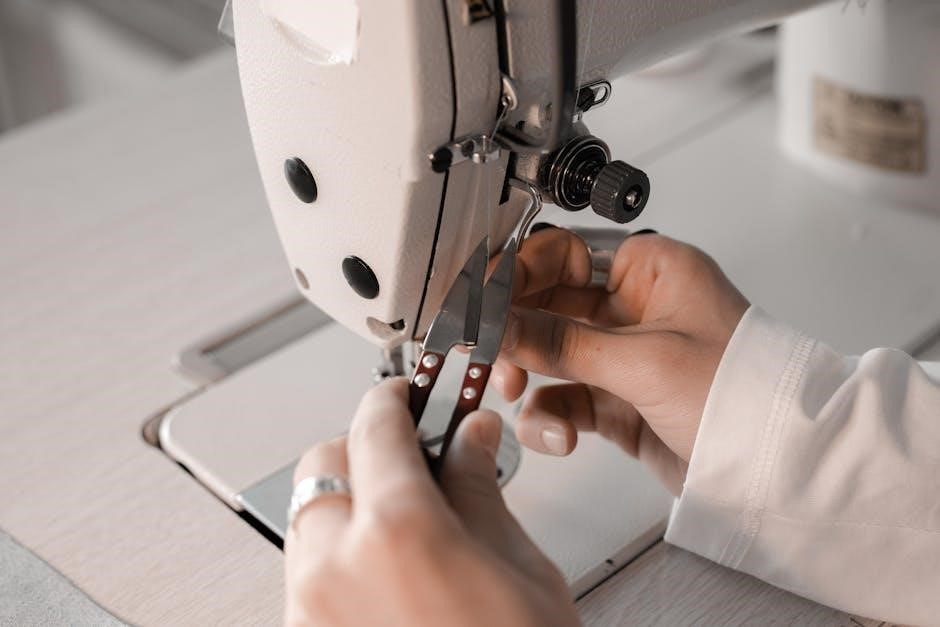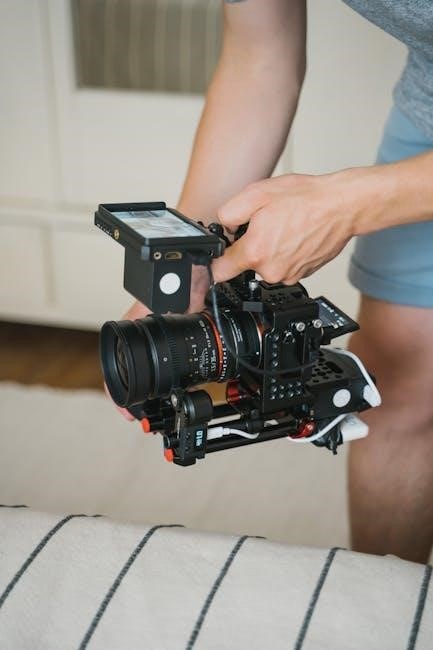Lorex operating manual provides guidance on installing and maintaining security cameras, including setup and troubleshooting tips to ensure optimal performance and privacy protection always online now;
Overview of Lorex Security Cameras
Lorex security cameras are designed to provide homeowners with a sense of security and peace of mind, with features such as motion detection and night vision, allowing for around-the-clock monitoring of their property, using a variety of connection methods, including wireless and wired options, to transmit footage to a monitoring station or local storage device, such as a digital video recorder, and can be accessed remotely through a smartphone app, giving users the ability to check in on their home from anywhere, at any time, with some models also including additional features, such as two-way audio and facial recognition, to enhance the overall security experience, and with a range of camera styles and designs available, including indoor and outdoor models, users can choose the cameras that best fit their specific needs and preferences, and Lorex security cameras can be used in a variety of settings, including homes, businesses, and public spaces, to provide an added layer of security and protection.

Understanding Lorex Camera Features
Lorex cameras have various features including motion detection and night vision for enhanced security always online now with easy setup.
Importance of Physical Shields for Privacy
Physical shields play a crucial role in maintaining privacy when using Lorex security cameras, as they prevent unauthorized access to the camera’s view. According to online sources, devices with physical shields are a solid option for those concerned about privacy. The use of physical shields can provide an added layer of security, ensuring that the camera is only recording when intended. This feature is particularly important for indoor cameras, where privacy is a major concern. By using physical shields, users can have greater control over when and where the camera is recording, reducing the risk of unauthorized access. Additionally, physical shields can also help to prevent hacking and other forms of cyber threats, providing an extra layer of protection for users. Overall, the importance of physical shields for privacy cannot be overstated, and users should consider this feature when selecting a Lorex security camera. This is a key consideration for many users.

Lorex Camera Setup and Installation
Connecting Lorex Cameras to a New Router
To connect Lorex cameras to a new router, start by accessing the camera’s settings through the Lorex app or web interface, then navigate to the network settings section. From there, select the option to connect to a new network and enter the router’s SSID and password. If the camera does not automatically detect the new network, manually enter the network details. It is also recommended to restart the camera after connecting to the new router to ensure a stable connection. Additionally, check the router’s compatibility with the Lorex camera system to avoid any potential issues. Using a router with a strong and stable connection will help to ensure that the cameras function properly and provide a clear video feed. By following these steps, users can successfully connect their Lorex cameras to a new router and enjoy uninterrupted monitoring and surveillance. The process is relatively straightforward and can be completed in a few minutes.

Troubleshooting Common Lorex Camera Issues
Lorex camera issues can be resolved by checking power and network connections always online now properly.
Resolving Image Display Problems with Lorex Cameras
To resolve image display problems with Lorex cameras, users can try checking the camera’s power and network connections, as well as ensuring that the camera is properly configured and updated. Additionally, users can try restarting the camera or resetting it to its default settings. If the issue persists, users may need to consult the Lorex operating manual or contact Lorex support for further assistance. It is also important to ensure that the camera’s firmware is up to date, as outdated firmware can cause image display problems. By following these steps, users should be able to resolve image display problems with their Lorex cameras and ensure that they are functioning properly. The Lorex operating manual provides guidance on troubleshooting and resolving common issues, including image display problems, to help users get the most out of their security cameras. Regular maintenance and updates can also help to prevent image display problems from occurring in the future.

Lorex Camera Maintenance and Updates
Lorex camera maintenance involves regular firmware updates and system checks to ensure optimal performance always.
Restarting and Resetting Lorex Cameras for Optimal Performance
To ensure optimal performance of Lorex cameras, it is essential to restart and reset them regularly. This process can help resolve issues such as connectivity problems, video feed interruptions, and system glitches. The Lorex operating manual provides step-by-step instructions on how to restart and reset the cameras. It is recommended to restart the cameras at least once a week to clear out any temporary issues. Resetting the cameras, on the other hand, should be done when more severe problems arise, such as a complete system failure. The reset process will restore the cameras to their default settings, which may help resolve the issue. It is crucial to note that resetting the cameras will erase all custom settings, so it is essential to back up the settings before performing a reset. By following the instructions in the Lorex operating manual, users can easily restart and reset their cameras to maintain optimal performance and ensure their security system is functioning correctly. Regular maintenance and updates can also help prevent issues from arising in the future.

